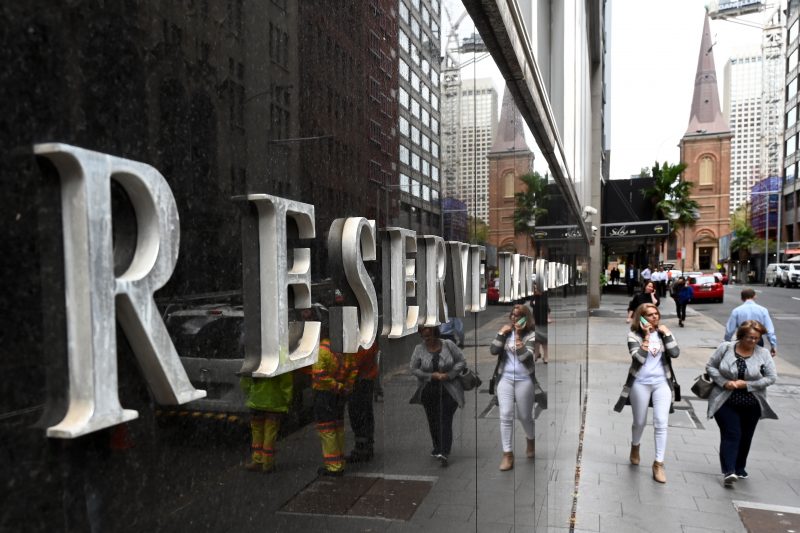Australia’s government cuts taxes ahead of election
Pedestrians reflected in the wall of the Reserve Bank of Australia on Tuesday after the government unveiled a big-spending federal budget (Saeed KHAN)
Canberra (AFP) – Australia’s conservative government unveiled a big-spending federal budget Tuesday with tax cuts and new infrastructure investment to win voters ahead of the imminent general election.
The budget includes a return to surplus for the first time in 12 years — with economic growth bringing a surfeit of Aus$7.1 billion (US$5.02 billion, 4.48 billion euro) forecast for 2019-20 — allowing the government to tout its economic credentials.
The election could be held as soon as next month, giving the minority Liberal-National government little time to reverse polls which have consistently favoured the Labor centre-left opposition.
Prime Minister Scott Morrison has tried to steer the debate away from his unpopular immigration and climate policies and onto the economy, which his party believes is a strong suit.
Federal Treasurer Josh Frydenberg told Australia’s parliament the budget was back in the black, “and Australia is back on track”.
He said the fundamentals of the Australian economy were sound, but there were genuine and clear risks emerging at home and abroad.
“Global trade tensions remain, the Chinese economy has slowed, and there has been a loss of momentum in Japan, Europe and other advanced economies,” he said.
“Notwithstanding these challenges, it is testament to the strength of the Australian economy that it is in the 28th year of consecutive economic growth. Our economic plan will see this continue.”
The Treasurer said growth was expected to pick up to 2.75 percent in 2019-20. The $7.1 billion budget surplus will rise to $11 billion in 2020-21, $17.8 billion in 2021-22 and $9.2 billion in 2022-23.
He said the surplus allowed the government to start paying off masses of accumulated debt, with the objective of eliminating it entirely by 2030 or sooner.
In a swipe at the former Labor government’s economic management, he said the previous coalition government of John Howard paid off Labor’s debt, and now Morrison’s government was setting a path to do it again.
“This matters because over the last year the interest bill on the national debt was $18 billion. And this was in a low-interest environment,” he said.
“This is money that could have built 500 schools or a world-class hospital in each state and territory.”
Frydenberg said the proposed tax cuts would reduce tax paid by 10 million Australians and three million small businesses.
There are losers, however.
Budget papers reveal savings of more than $2 billion over four years through reduced welfare payments. Savings of $77.9 million come from “better targeting of support for refugees”.
Frydenberg said a strong economy needed roads, rail, bridges, dams and ports and the government was boosting infrastructure spending to $100 billion over the decade.
That will deliver a range of new projects in every state and territory.
“Cranes, hard hats and heavy machinery will be seen across the country as we build Australia for current and future generations,” he said.
Disclaimer: Validity of the above story is for 7 Days from original date of publishing. Source: AFP.


